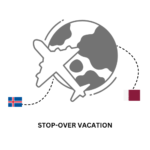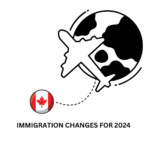Canada has long been a popular destination for students, workers, and tourists seeking new opportunities and experiences. However, significant immigration policy changes introduced throughout 2024 reflect the government’s goal of managing the growing demand and better-aligning immigration with national priorities. From stricter student intake requirements to a more targeted approach to work permits and tourist visas, here’s a summary of the major updates that will shape Canada’s immigration landscape.
- New Limits for International Students
Starting from January 2024, Canada introduced a cap of 360,000 on the number of international students permitted yearly. To meet this cap, most students will now need to submit a Provincial Attestation Letter (PAL) as part of their study permit applications, which confirms support from the province or territory where they plan to study. The intake cap for 2025 will be determined by the end of this year.
Additional measures have also been put in place to ensure a sustainable student program:
Work Permits for Spouses: Only spouses of students enrolled in Master’s, Doctoral, and certain professional programs can now apply for open work permits, narrowing eligibility.
Increased Financial Requirements: Students must now show proof of funds amounting to $20,635, more than double the previous $10,000 requirement.
Restricted Work Hours: From Fall 2024, international students will be allowed to work only up to 24 hours per week off-campus, a return to pre-COVID limits.
Post-Graduation Work Permits: Graduates in programs under curriculum licensing arrangements are no longer eligible for post-graduation work permits.
These changes are intended to better control the flow of international students and support Canada’s education and labor markets.
- Updates to the Start-up Visa and Self-Employed Persons Programs
Canada’s Start-up Visa (SUV) and Self-Employed Persons programs have also undergone changes to address increased application volumes:
Limit on Start-ups: Each designated organization can now support only up to 10 start-ups with permanent residence (PR) applications. Start-ups backed by Canadian investors or business incubators in Canada’s Tech Network will receive priority processing for faster application times.
Pause on Self-Employed Persons Program: Due to lengthy processing times, the Self-Employed Persons Program is paused until January 2027. Existing applications will still be processed, and the government will explore ways to improve the program.
These updates aim to streamline application times and maintain an efficient system for high-potential entrepreneurs.
- Revised Targets in the Immigration Levels Plan
In October, Canada released its updated Immigration Levels Plan, which outlined reduced targets for permanent resident admissions over the next three years:
2025: 395,000, down from the initial 485,000 target.
2026: 380,000, down from the previously planned 500,000.
2027: 365,000.
Although the overall immigration targets are lower, the government is placing a greater emphasis on economic immigration. For 2025, the economic immigration target has only been reduced by 17% (from 281,000 to 232,000), with over 40% of these new economic immigrants expected to be current temporary residents in Canada. This shift aims to balance sustainable immigration growth while addressing national labor market needs.
- New Rules for the Post-Graduation Work Permit Program
In September, the Post-Graduation Work Permit (PGWP) program introduced stricter eligibility requirements. Starting November 1, some international graduates will need to meet additional field-of-study requirements to qualify for a PGWP. Eligible fields now focus on areas of high demand that align with Canada’s job market needs:
Agriculture and agri-food
Healthcare
Science, Technology, Engineering, and Mathematics (STEM)
Trades
Transport
These changes align PGWP eligibility with Canada’s workforce demands, supporting economic growth by targeting high-priority fields.
- New Policy for Tourist Visas
Canada has also updated its approach to tourist visas, stepping away from the previous standard of automatically issuing 10-year multiple-entry visas. Immigration officers now have more discretion in deciding the type and duration of each tourist visa based on individual applications. This means that multiple-entry visas may be granted for shorter periods depending on the applicant’s circumstances, adding an extra layer of case-by-case evaluation.
Conclusion
Canada’s recent immigration policy changes reflect a focused approach to balancing the benefits of international talent and tourism with sustainable growth. From revised study permit requirements to updated work permits and new entry targets, these changes will impact how international students, workers, and tourists experience Canada. Staying informed and understanding these updates is essential for anyone planning a move to Canada, ensuring smoother transitions and successful applications in a changing immigration landscape.



